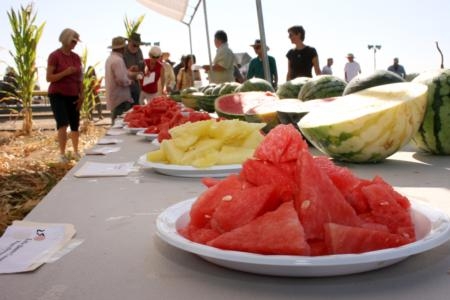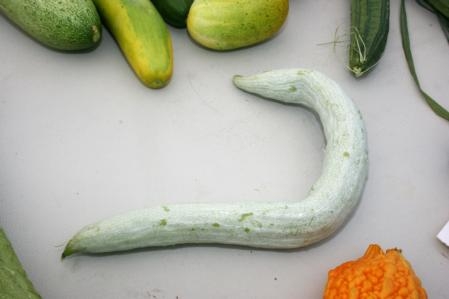Posts Tagged: Southeast Asian
Demand increases for Asian vegetables
Richard Molinar, UC Cooperative Extension advisor in Fresno County, told the reporter that demand is driving increased cultivation of Asian vegetables in Fresno County.
"We have around 50 to 75 Chinese farmers here in Fresno County and over 2,000 acres of Chinese crops selling locally as well as nationwide," Molinar said.
The article noted that UC Cooperative Extension offers advice and services to these growers.
"In addition to providing them with technical support, we also help those farmers to find new marketing opportunities," Molinar said.
Kearney research station a Fresno County 'gem'
In the waning days of her tenure at the Fresno Bee, food writer Joan Obra devoted an entire column to the UC Kearney Agricultural Research and Extension Center near Parlier.
When she first announced her decision to leave the Bee to return to her family's Hawaii coffee farm, Obra wrote rapturously about the UC Lindcove Research and Extension Center. Her following column said, "I'm not yet done telling you stories." She then recounted treasures she discovered over the years during tours of the 330-acre Kearney station near Parlier.
Obra was fascinated by:
- A demonstration planting of medicinal and culinary herbs from Southeast Asia which includes common and scientific names for the plants.
- Sichuan peppers that she wrote "nearly choked me," planted by UC Cooperative Extension farm advisor Richard Molinar at Kearney as a possible California specialty crop.
- A late summer field day where she tried more than 20 varieties of mini watermelons. "The red flesh of the Little Deuce Coupe was pleasingly crunchy but not super sweet. And the sunny interior of the Mini Yellow was sweeter but not as crisp," Obra wrote.
- Jujubes. Not the artificially flavored candy that sticks to your teeth, but small apple-like fruit important in Asian communities.

A watermelon field day at Kearney. (Photo: B. Dawson)
UC event documented in photos, but not in spirit
The beautiful strawberry stand photos that graced a New York Times story yesterday about the locavore movement were shot at a UC event last Friday designed to remind Sacramento residents about the beginning of their local strawberry season and promote two UC initiatives to help local growers.
It was great that Time's photographer Max Whitaker showed up, but it would've been nice to have credited UC for the purpose of the gathering. UC researchers received a half-million-dollar grant from USDA to work closely with Southeast Asian farmers in Sacramento and Fresno counties on improving production practices, ensuring food safety and expanding their markets.
Not that the Times story wasn't interesting. It focused on a new advertising campaign for Lays Potato Chips that extols their connection to farmers and local communities. The story, written by Kim Severson, said food producers and large-scale farming concerns are embracing a broad interpretation of what eating locally means.
"This mission creep has the original locavores choking on their yerba mate," Severson wrote.
In fairness, the article did touch on the second program promoted at last week's strawberry stand event, but without mentioning UC. The "Grow Local and Buy Local" initiative - a collaborative effort with UC and the Sacramento Farm Bureau that is funded with a $50,000 grant from the Sacramento Board of Supervisors - is designed to take advantage of the close proximity of Sacramento's farms and consumers.
Part of the money is being used to encourage 3,000 area farmers to grow acres of what the Severson calls "grocery store crops," like strawberries and artichokes instead of "commodity crops," like safflower and alfalfa, or to sell more fruit fresh, rather than sending it to canners.
The fresh produce can then be marketed as "local" and sold to nearby hospitals, schools, jails and other institutions that want to buy food grown nearby, and sold direct to consumers at local farmers markets, flea markets and road side stands.
The New York Times wasn't the only media outlet to come to the strawberry stand. Sacramento County UC Cooperative Extension farm advisor Jenny Broome said representatives from the ag publication Capital Press, KCRA Channel 3 News, and the Elk Grove Citizen covered the event.

Sacramento strawberry stand.


